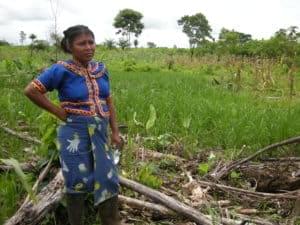
This report outlines how the Victims and Land Restitution Law (Ley de Victimas y de Restitución de Tierra, Law 1448, June 2011) has been a positive step forward in recognising the existence of an armed conflict, something that had previously been systematically denied by the State. This has allowed for a legal framework to be created for the reparation of victims and the restitution of the land from which they have been forcibly dispossessed. By recognising the existence of an internal armed conflict, the government has afforded protection rights to the population under international humanitarian law.
Concerns, however, have been expressed regarding the limited nature of Law 1448 to return land in accordance with international norms. As a result, a number of constitutional challenges have been filed against certain articles by national NGOs and other civil society actors.
It also highlights the major challenges to the implementation of Law1448. These include the political and security context that surrounds the land restitution process and the reality that victims face in some areas of a failure of the rule of law – in part as a result of collusion operating between some of the security forces, local elites and paramilitaries; the security of victims and the sustainability of the returns; and the ongoing internal conflict. This briefing also points out that whilst this is a major step forward it does not address all victims equally and has some built in obstacles to the full realisation of the rights of victims to truth justice and reparation.
